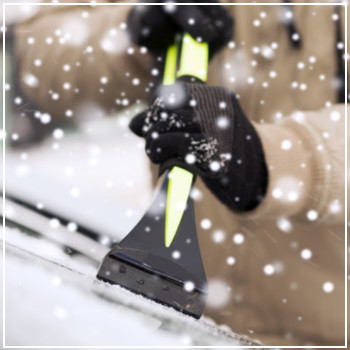 While driving your car in snow and ice is treacherous, leaving your car in the driveway all winter is not much better for your vehicle. Cold temperatures cause parts to crack and fluids to thicken, which exerts more strain on the system, damaging your car in the process. What should you know?
While driving your car in snow and ice is treacherous, leaving your car in the driveway all winter is not much better for your vehicle. Cold temperatures cause parts to crack and fluids to thicken, which exerts more strain on the system, damaging your car in the process. What should you know?
Tires
Once temperatures drop below 44°F, the rubber of your all-season tires starts to harden. As a result, your trusted tires gradually lose their grip and traction in snowy, slick conditions.
Decreased pressure also impacts the performance of your tires. For every 10°F drop in temperature, tires lose one pound per square inch (PSI) and, unless you check the pressure regularly, inflation will continue to drop. Driving around on under-inflated tires can result in uneven wear to the treads, may lead to premature blowout or could cause you to lose control on slippery surfaces.
Fluids
Cold causes your car’s fluids – motor oil, transmission, anti-freeze – to develop a viscous consistency. At first, this thicker composition does not flow well enough through the engine, so it’s a good idea to warm the car up for 10 to 15 minutes before you travel anywhere to thin out the fluids. Without this warmup, the fluids may damage internal seals and other parts, leading to future performance issues or leaks.
As a baseline, be sure to check all fluid levels at the start of the season. Top off anything that’s on the low side or have it replaced if the fluid looks murky or dirty. Also consider using a thinner oil grade or adding an engine block heater or battery blanket for improved starting.
Pay particular attention to the coolant, as its water content could freeze, expand and crack internal parts. This time of year, avoid using water or a water mixture as coolant. Instead, pure authentic antifreeze provides a longer lifespan.
Engine
Most people want to get into a warm car before driving to work in the morning but turning the heater on right away actually takes away some of the energy used to get the engine started. As a good rule on thumb, wait 20 minutes after starting the engine to use the heater. Otherwise, you end up drawing out the warmup, during which the engine operates less optimally and winds up consuming more fuel.
Windshields and Wipers
Glass is vulnerable to the cold and, contrary to DIY advice, it’s never a good idea to splash hot water on the windshield for this very reason: The glass could crack beyond repair. Yet internally, using the defroster at a high setting can also damage the windshield. If you’re adverse to using an ice scraper, use an alcohol-based spray to clean off any ice.
Cold weather also affects your wipers. On an especially cold night, the rubber compound could freeze right to the glass, damaging the windshield if you don’t angle them away. There’s also a strong likelihood that the rubber itself could be damaged. Tilt the wipers away from the glass or, in the event of an unexpected ice storm, peel them off the windshield before starting the car.
Battery
Extremely cold conditions decrease the battery’s voltage, which poses a challenge when you start the vehicle. Car batteries function optimally in 30 to 90°F and, especially if it’s at least three years old, temperatures below freezing could greatly impact its performance.
As the season begins, have the battery tested. If its capacity has declined or it’s having trouble holding a charge, have the battery replaced. Think about storage, too. A garage or other climate-controlled space offers a more consistent environment where the vehicle and battery are not exposed to fluctuating temperatures.
Leaking
While viscous fluids that damage seals could lead to leaking, there’s another factor you need to look out for: Condensation and the ice it creates. Metal and plastic parts attract moisture, especially when a car moves between warm and cool environments. The moisture may then freeze over, leading to bits of ice in the power steering, brake and transmission systems.
While the fluids can pass through, the ice cannot, thus creating blockages and leaks. Have old fluids flushed at the start of the season to remove any residual moisture.
Corrosion
Whether you’re out driving or your parked car is regularly hit with road spray, corrosion eats away at metal parts. While it looks unsightly, unchecked rust formation can also lead to structural issues and damage to the undercarriage, wheel wells and brakes, which decreases performance.
As a general tip, have your vehicle rustproofed at the start of the season. Throughout winter, get in the habit of washing off salt deposits and other debris, especially on the undercarriage.
Whether you need fluids topped off, a battery replaced or rustproofing, work with DaSilva’s Auto Body to get your car ready for winter. To learn more or set up an appointment, give our Naugatuck shop a call today.




